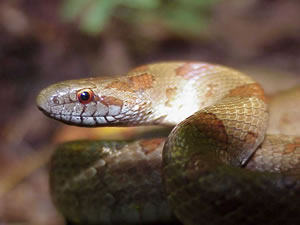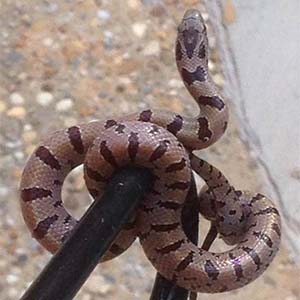Mole Kingsnake (Lampropeltis calligaster)
Mole Kingsnake (Lampropeltis calligaster)
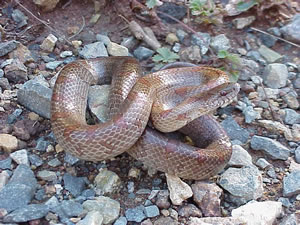
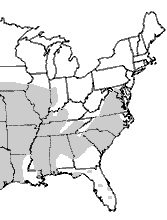
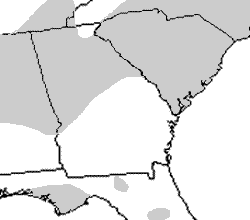
Description: A medium-sized kingsnake, typically 76–102 cm (30–40 in). Body coloration is light to reddish brown with a series of reddish-brown elliptical blotches down the dorsum, though this pattern often fades in older individuals, which may appear nearly uniform in color. Venter is whitish to yellowish with red, gray, or brown mottling. Scales are smooth. Females have shorter tails that taper more quickly than those of males.
Range and Habitat: Occurs throughout the Mid-Atlantic states, absent from most of Florida, the Deep South, and mountainous areas of the Appalachians. A disjunct population in central Florida is considered a separate subspecies. Within the Southeast, the Mole Kingsnake is characteristic of the Piedmont, where it is most common, though it also occurs in limited portions of the Coastal Plain of the Carolinas. Habitats include fields, cultivated lands, thickets, and forest edges, with highest abundance in open areas.
Habits: Secretive and primarily fossorial, spending much of its time underground. Rarely encountered except when crossing roads on warm evenings or found beneath boards, tin, or other surface cover. Diet is broad and includes small mammals, lizards, birds, and other snakes, consistent with other kingsnakes. Breeding occurs in late spring to early summer; females lay up to 17 eggs underground in early to mid-summer, with hatching occurring in late summer to early fall.
Conservation Status: Although infrequently observed, Mole Kingsnakes are locally common in some areas. Protected in Georgia but not elsewhere in their range. Their fossorial lifestyle and tolerance of agricultural and suburban landscapes help sustain populations despite being seldom seen.
